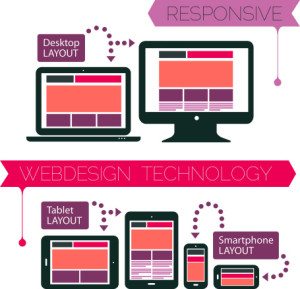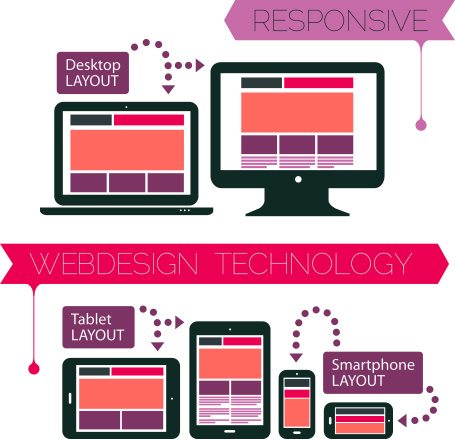
Is your website responsive? Responsive design is the art and science of developing a website that adapts to the needs of mobile device users – including the different form factors, display sizes, and inputs on mobile platforms. With mobile more popular than ever, it has never been more important for businesses of all sizes to take a responsive approach to their online presence.
 According to a report from the Pew Research Center, 64% of Americans owned a smartphone as of 2015. The same report reveals that about 25% of those surveyed own a smartphone, but have limited alternative options for online access.
According to a report from the Pew Research Center, 64% of Americans owned a smartphone as of 2015. The same report reveals that about 25% of those surveyed own a smartphone, but have limited alternative options for online access.
Some experts even assert that mobile access to online resources now exceeds PC access. This is an especially momentous turn of events for firms in the B2B space. Exploring the topic of “mobile executives,” the 2014 IDG Global Mobile Survey revealed:
- Virtually all executives, 92%, own a smartphone that they use for business.
- 77% of executives have used their smartphone to research B2B offerings.
- 93% of executives ultimately make their B2B purchases by going online.
- 86% of executives have used a tablet to conduct B2B product research.
The explosive growth of mobile means that serving all your potential customers well all but requires a responsive website. However, even that only tells part of the tale. Let’s take a closer look at some of the unexpected reasons why a responsive design is essential.
1) A Responsive Design May Improve Search Engine Position
Search engine optimization – SEO – is a process that demands continuous refinement. Experts are always looking for new ways to align sites with the evolving demands of major search engines. Often, the steps that need to be taken to improve a site’s search engine position are ambiguous. In the case of mobile-centered design, though, Google has been clear: Fully responsive sites have an advantage over their unresponsive peers.
2) A Responsive Design Increases Conversions Across the Board
A responsive website isn’t solely for the benefit of mobile users, although they get the greatest gain in performance. Desktop users have a vast selection of monitor sizes and system configurations to choose from, and responsive design helps iron out differences between them. That makes it easier for users across all platforms to get the experience they expect from your site and complete a purchase without any issues.
3) A Responsive Design Gets B2B Decision-Makers’ Attention
The statistics above show B2B decision-makers are linked to the world through their mobile devices no matter where they are. Business travel spending is on the rise, with $72.8 billion spent on business travel in the second quarter of 2014, a gain of more than 7% over the same period in 2013. During business travel, B2B executives are a “captive audience” who have little else to do besides surf the Web. Responsive sites, being easier to navigate on mobile, are far more likely to hold their attention.
4) A Responsive Design Means Less Maintenance and Overhead
The responsive design revolution means it will no longer be necessary for businesses to maintain separate mobile and non-mobile sites. This makes it far simpler to keep your enterprise Web presence up to date, but that’s not all. Responsive sites tend to be cleaner, faster, and more efficient from a technical perspective, saving time for both you and your online visitors.
The verdict is in: Responsive design isn’t just a trend, but the next wave all businesses must adapt to. In the B2B space in particular, responsiveness is vital. The sooner you make the switch, the sooner you – and your customers – can reap the benefits.
